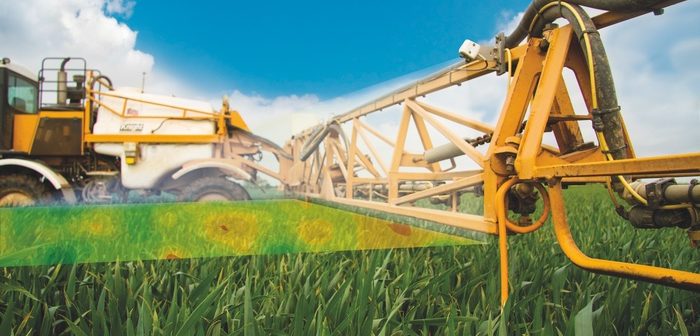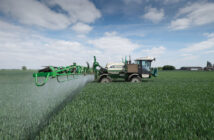Soils, integrated pest management and technology were the focus of discussions at the Hutchinsons West Spring Farmer Conferences held at the EPI-Agri Centre at Harper Adams University.
Any rooting problems with combinable crops need to be sorted by the time they flower, said Ian Robertson, manager of Sustainable Soil Management, which is part of the Hutchinsons Group.
But this year may prove to be difficult for crops. The wet autumn of 2019 has led soils to collapse in many places, leaving growers with challenging conditions.
Mr Robertson said: “Wet soils have compacted, which has resulted in a lack of air and they then become anaerobic.”
The ideal soil proportions are 50 % air and water, and 50% sand, silt and clay, so if this is unbalanced there can be a dramatic effect on rooting.
“This year, roots are likely to have more difficulties penetrating them to access water and nutrients.
“The worst crops I have seen are those where volunteers were removed before drilling, so they have been sitting wet all winter, causing both structural and microbial issues.”
Things could be even more challenging if in late spring the weather becomes dry and hot, as the soils will bake and become like concrete, he warned.
“Crops will have to work very hard this year to achieve good yields, so clever cultivations and nutrient strategies are called for. Getting drilling depth right will be crucial, as will early feeding of crops to prevent nutrient deficiency.
He advised growers to use their spades to dig holes and assess conditions.
“This will be particularly important this year as judgements will need to be fluid and react to changing circumstances.
“The good news is that biology is quick to recover.
“If you are unsure what to look for there are people to help you.”
Growers may need to re-think their disease control strategies, warned Dr David Ellerton, technical development director at Hutchinsons.
This is partly in response to the Government’s 25 year Environment Plan which puts integrated pest management (IPM) at the heart of plant protection, but also an urgent need to protect plant protection chemistry from resistance.
Fungicide programmes will need to consider location, weather, drilling date and variety, said Dr Ellerton, adding that checking the individual traits of each variety will become more important when making decisions on which one to grow.
The decreasing chemical protection toolbox, with products such as chlorothalonil already withdrawn, and others, such as mancozeb and epoxiconazole, at risk, is likely to put greater pressure on varietal resistance, too.
Increasing instances of resistance to fungicides is also a threat to crops, he said.
“In 2015, SDHI fungicides gave an average of around 90 per cent control of Septoria tritici, because of a number of mutations in populations of the disease we found that in 2019 there were a number of cases where it had declined to just 60 per cent or below.”
This makes it even more important to protect newly approved cereal fungicides, such as Revysol, by using them in mixes with alternative modes of action such as the multi-site fungicides.
Better plant health may also help crop tolerance and resistance.
“At Hutchinsons, we have been exploring the potential of a number of biostimulant products to optimise disease control, and have found promising results.
“We are about to enter a new era of disease control and implementing IPM techniques will be key to achieving optimum results.”
Technology will play an increasingly important role in helping growers manage climatic challenges while improving efficiency and productivity, said Stuart Hill, Hutchinsons, head of technology and innovation at Hutchinsons.
This is because the data collected helps growers make better-informed decisions.
“Omnia is at the heart of this strategic decision making between agronomist and grower. Future tools and collaborations these are likely to link through Omnia’’.
He noted that Plant Vision provides sensors on tractor booms that measure biomass, facilitating crop growth assessments and make appropriate decisions on actions that need taking.
“This information can then be overlaid with yield maps and show the parts of the field that have higher or lower productivity. Omnia can also overlay the costs per tonne of production in these areas,” said Mr Hill.
The web based system can import data from multiple sources, making it easier to ensure NVZ compliance.
Moving on to talk about the Helix project, he explained that it is assessing technologies that can provide a benefit whether in productivity, profitability or efficiency.
“In the future transparency and justification of input use will be standard, so the better information we have, the more visibility there will be for the supply chain,” said Mr Hill.
“With the Helix nutrition project the aim is to drive more seamless and live nutrition information from soils and the crop. This will drive nutrient use efficiency and thereby help keep costs under control.”




